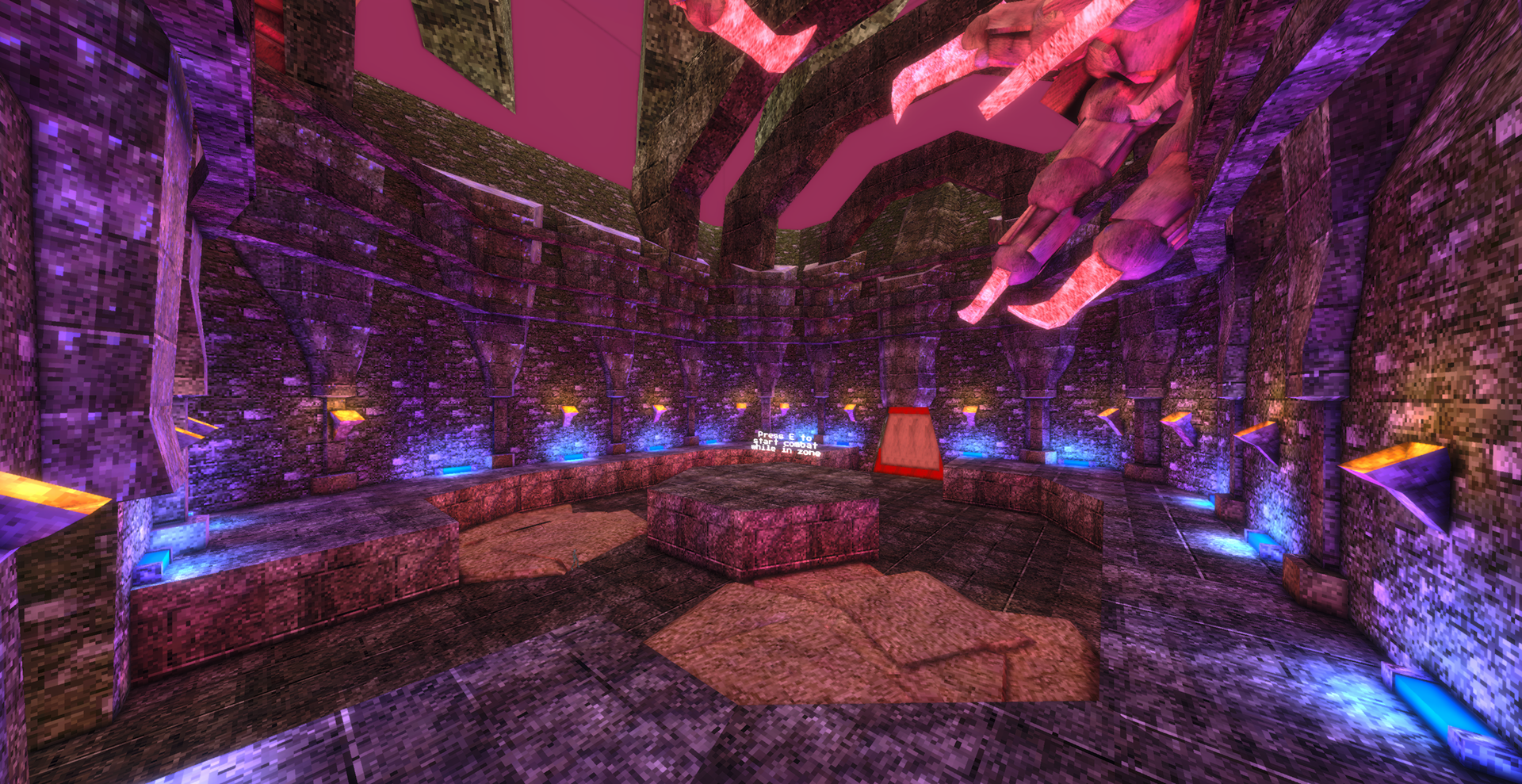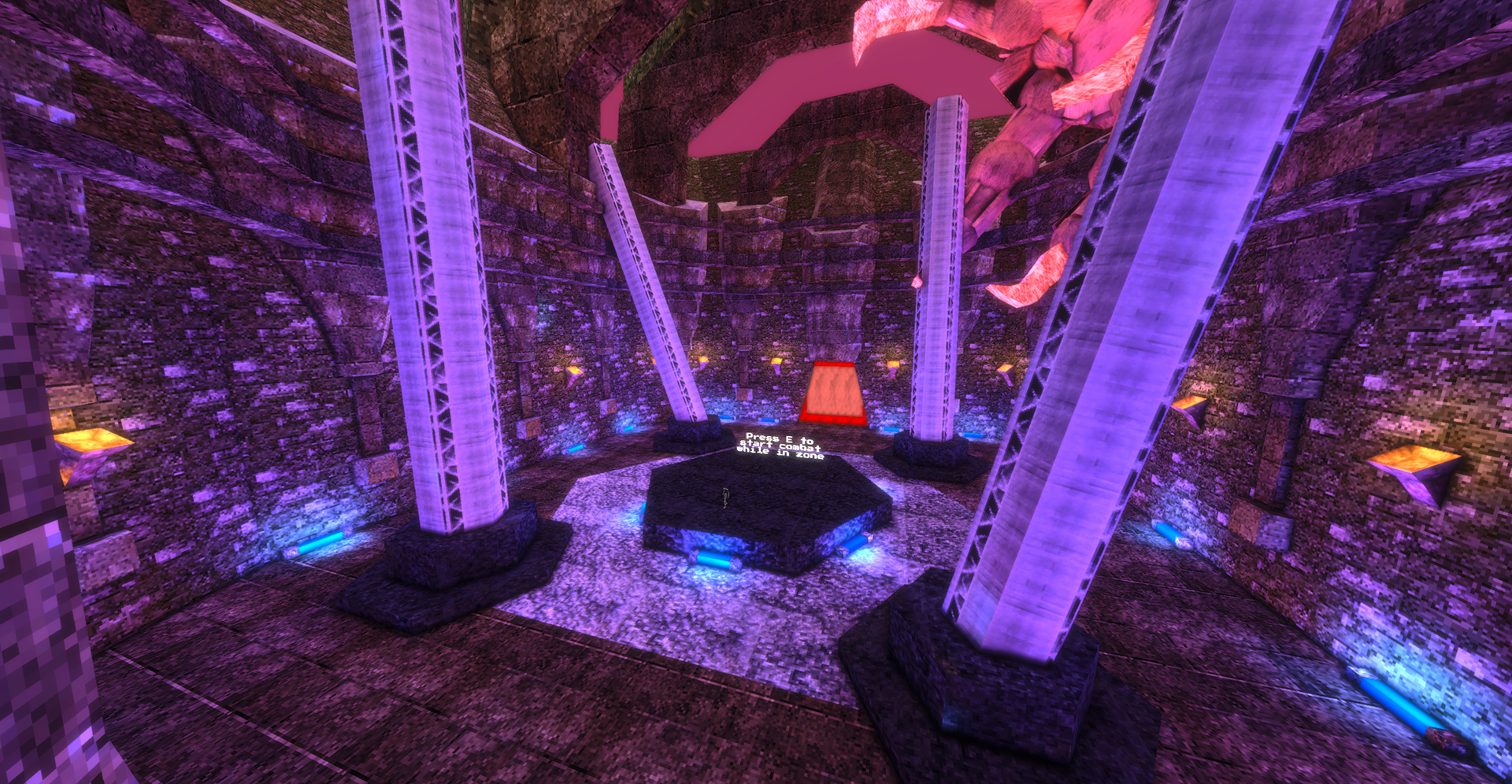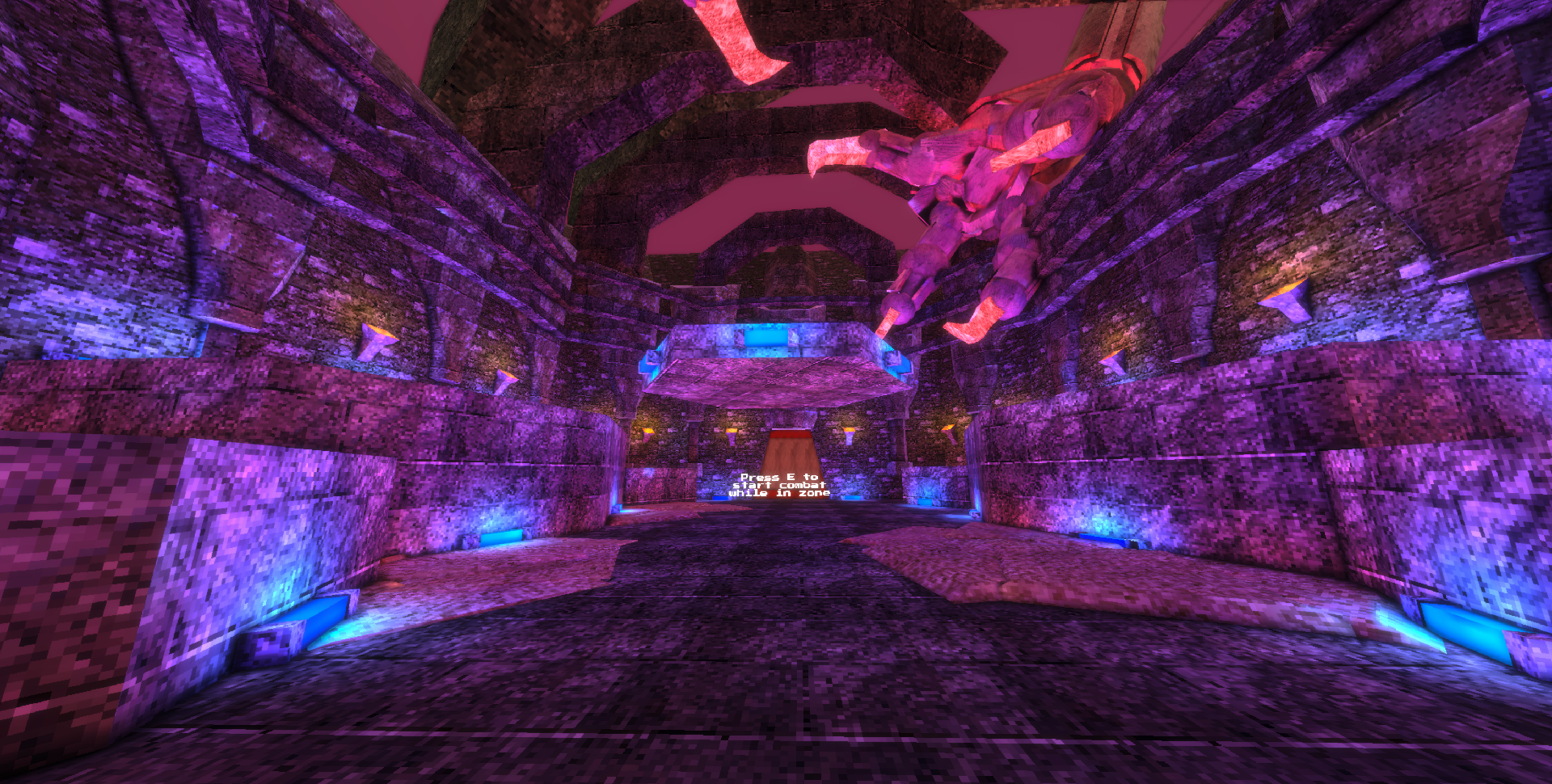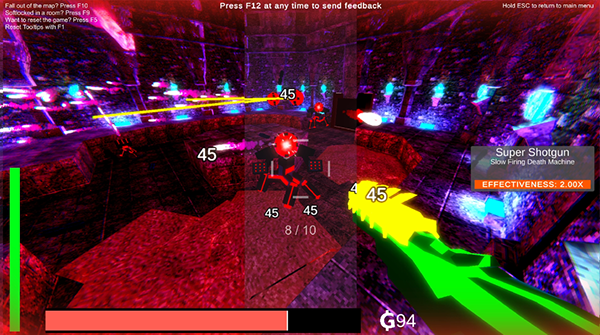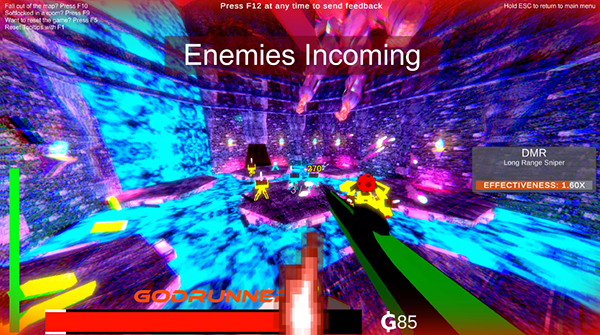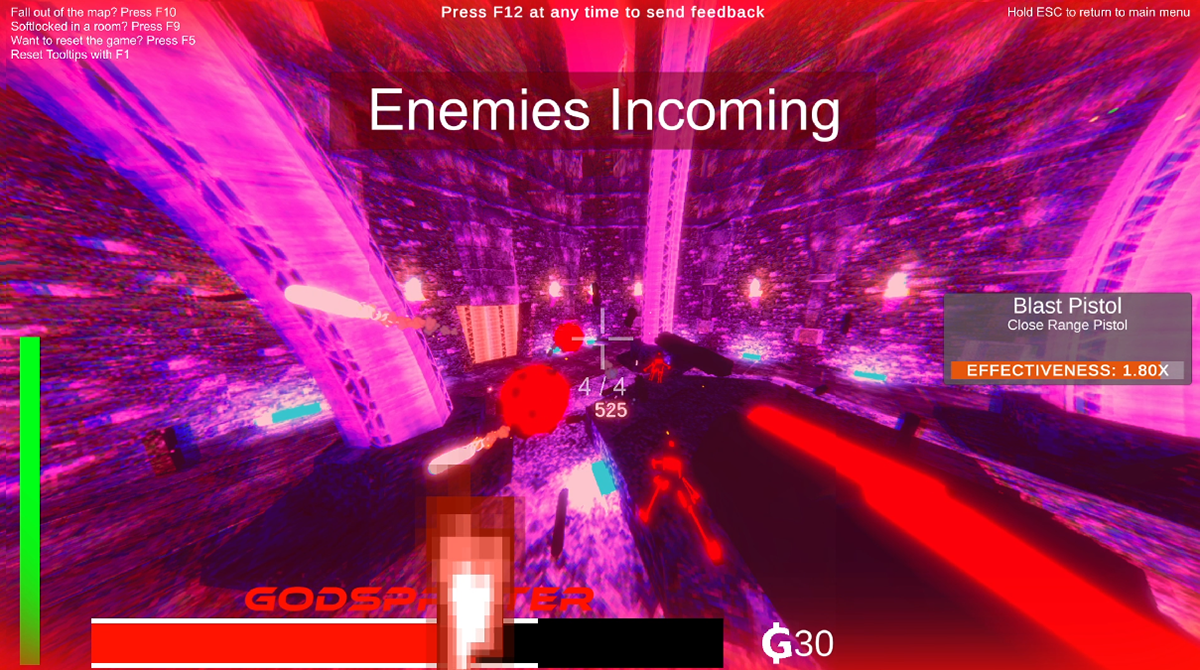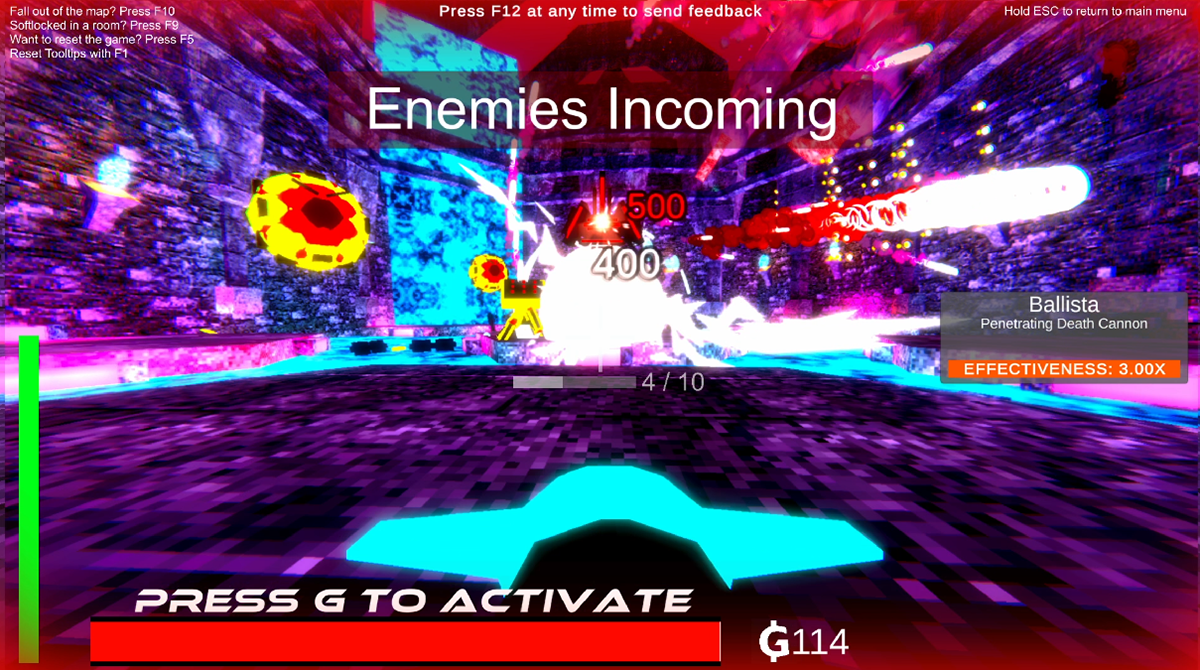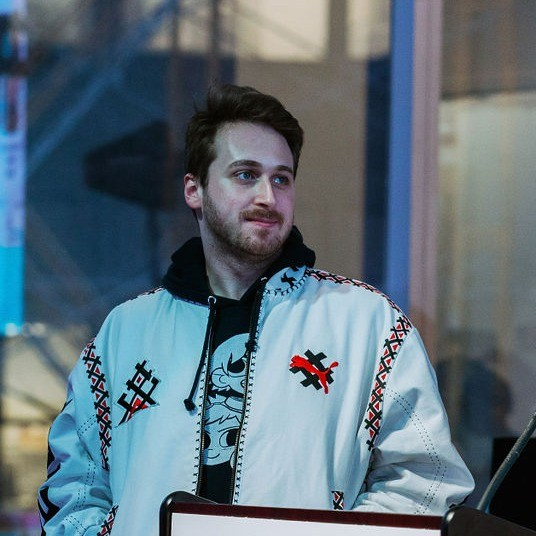GODWALKER
What is Godwalker?
Godwalker is a first person action roguelike developed around a simple question: What if DOOM was a roguelike? Godwalker served as Josh’s graduate thesis during his time at New York University as he pursued his Master’s Degree. Godwalker went on to receive several accolades, being featured at conventions and festivals across the country. The latest builds of Godwalker are regularly uploaded to its Itch.io page.

Process
Godwalker is Josh’s largest solo project to date, representing two years of continuous designing, testing, iterating, and refining. Throughout his time at NYU, Josh built more than fourteen playable prototypes before settling on one to expand into a refined project. There were several moments of success and failure throughout this process, and all of them have been documented. Upon release, Godwalker’s code was made open source, so that anyone could use code from it to build their own games.
Now that he is no longer working on the game, Josh has presented several of the failures from throughout development as points of learning, and has turned those experiences into talks and lectures.
Diversification of Play
In September of 2023 Godwalker was shown at the Unity NYC conference, along side a talk which presented the challenges of designing a successful classic shooter. Through this talk concepts of orthogonal game design and actuated diversification of play were showcased by contrasting different classic shooter games, while relating the concepts back to how they influenced the design of Godwalker. The talk was also made into a blog post, which expands more on the topics of how individuals learn through experiential learning & play.
Technical Artwork
As a solo developer, Josh was tasked with finding creative solutions to several problems. One of those problems was the need for a great deal of 3D assets. To combat this, Josh spent a great deal of time researching technical art, and out of it came a series of different art styles and methodologies which he applied to the creation of Godwalker’s art.
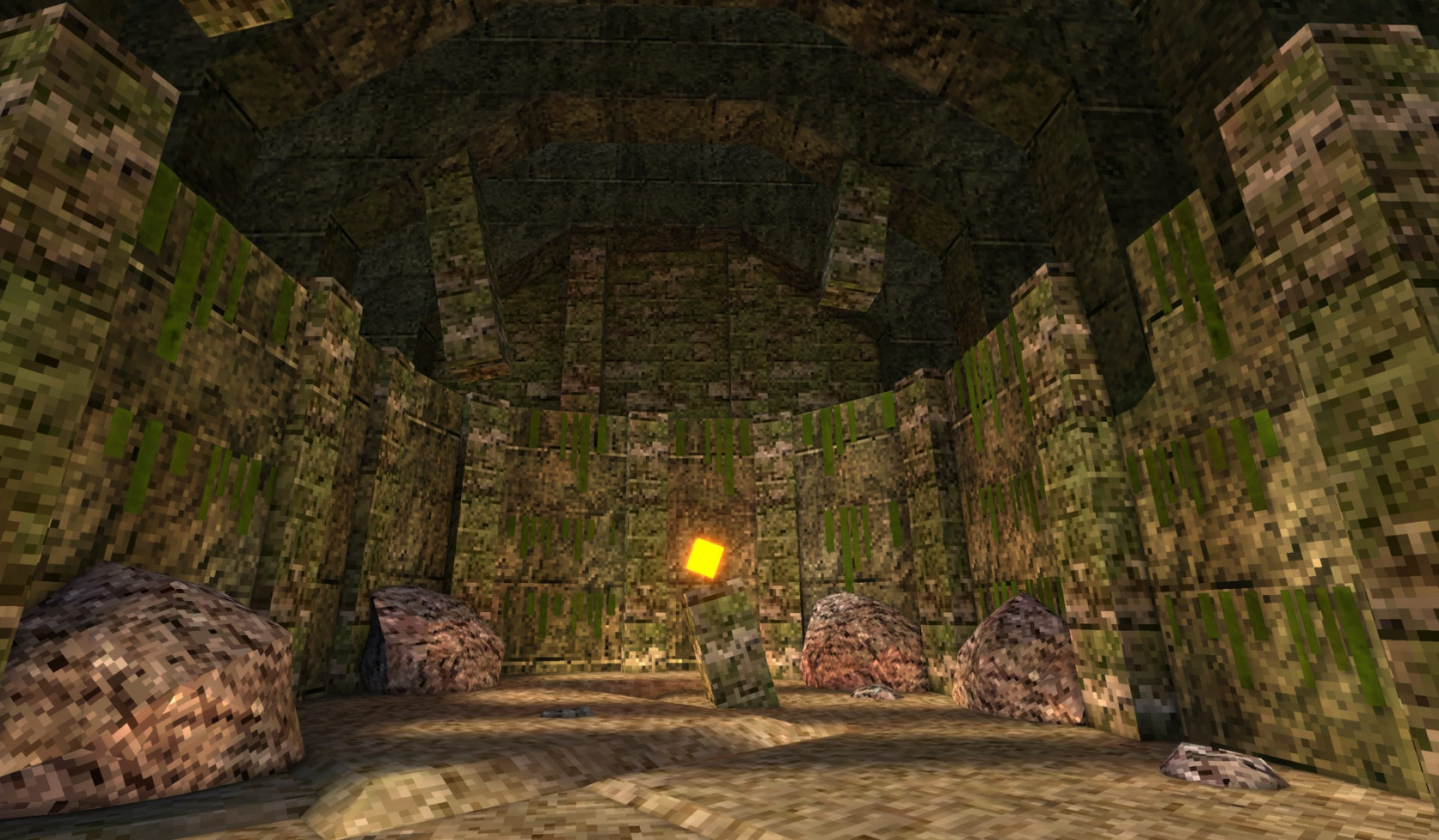
Style Constraints
The first of these methodologies was to establish constraints within the art style, functioning as both a technical and design guide. This allowed for the creation of new assets without confusion, and outlined a technical production process which produced consistent results in production. This process did not come easily, and required several art tests and prototypes before it was usable. This blog post speaks to the process more in depth: Forced Constraint Artwork in Godwalker
Art style exploration was a slow and steady process throughout the development of Godwalker. Having worked as a 3D artist in the past, Josh knew that he’d have to leveage his skillset. The process of exploring art styles was a difficult one, coated with failures, issues, and experimentation. Limitations on statically computed information (shadows, bitmaps, probes) put in place by a generated world meant that all rendering had to be real-time. This meant all art tested art styles needed to fit a similar ideology.
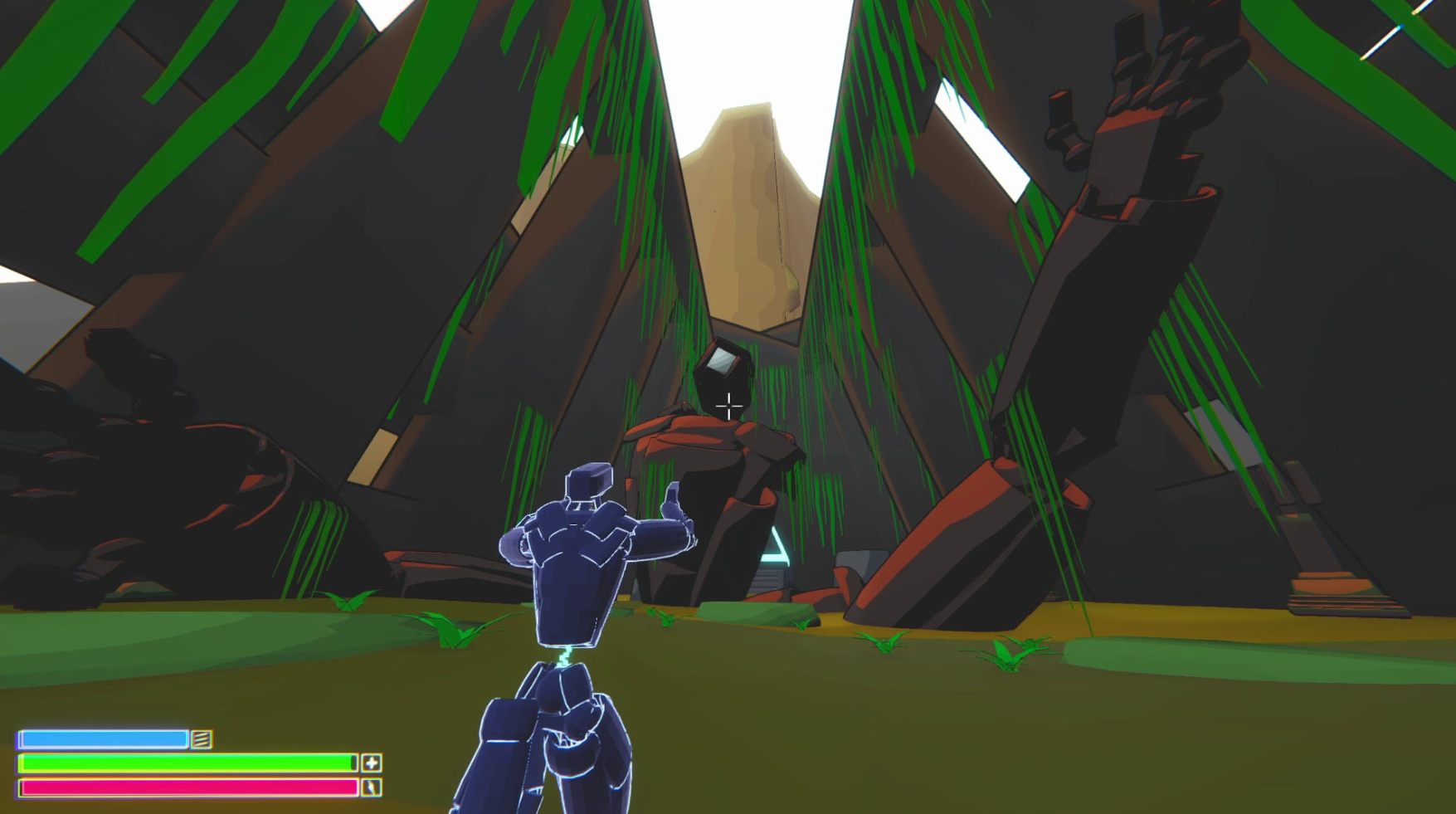
While there was never a point where progress haulted, the consistent iteration did yield quite a few experiments that simply did not work. Encountering these dead-ends and learning where things went wrong was what kept the process moving forward. To read more about this process, see: Art Style Exploration in Godwalker
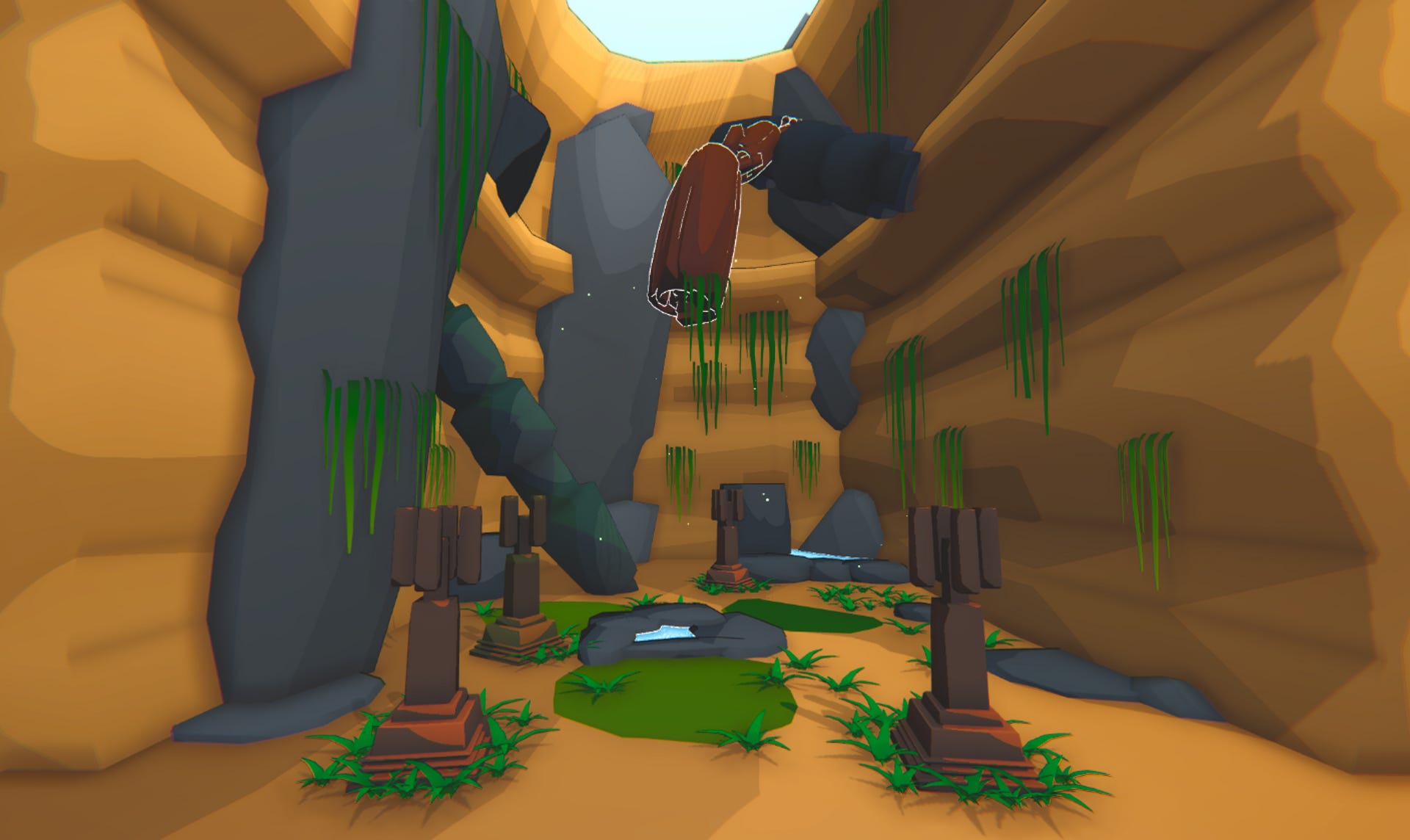
Animation
In addition to the art stylization, animation was also required to ensure the game felt polished. Much of an action game’s feedback is told through its animations. Because of this, an inverse kinematics system was developed for the enemies in the environment. The inverse kinematic system was then coupled with a set of procedural animation rules. This allowed for the creation of new enemies in a matter of hours rather than days, removing the constraints commonly found when animating complex skeletal architecture.

This same animation system allowed for the player and weapons in the game to have their own procedural animations as well. This meant that rather than building animation files for all of the elements of the game, rules were put in place for how they behaved. At the end of the project there were more than 10 enemies and 40 weapons, each with their own set of animations rules. To read more about these animation systems, see: Procedural Animation Techniques in Godwalker
Combat Design
Combat design throughout the game relied on consistently interesting weapons, maps, and enemies. Josh spent a great deal of time building systems for each of these so that he could build and prototype them rapidly. Weapons were all derivative of the same parent class, enemies had a functional behaviour system, maps evolved as gameplay progressed, and there was even a combat director which controlled the “mood” of gameplay.
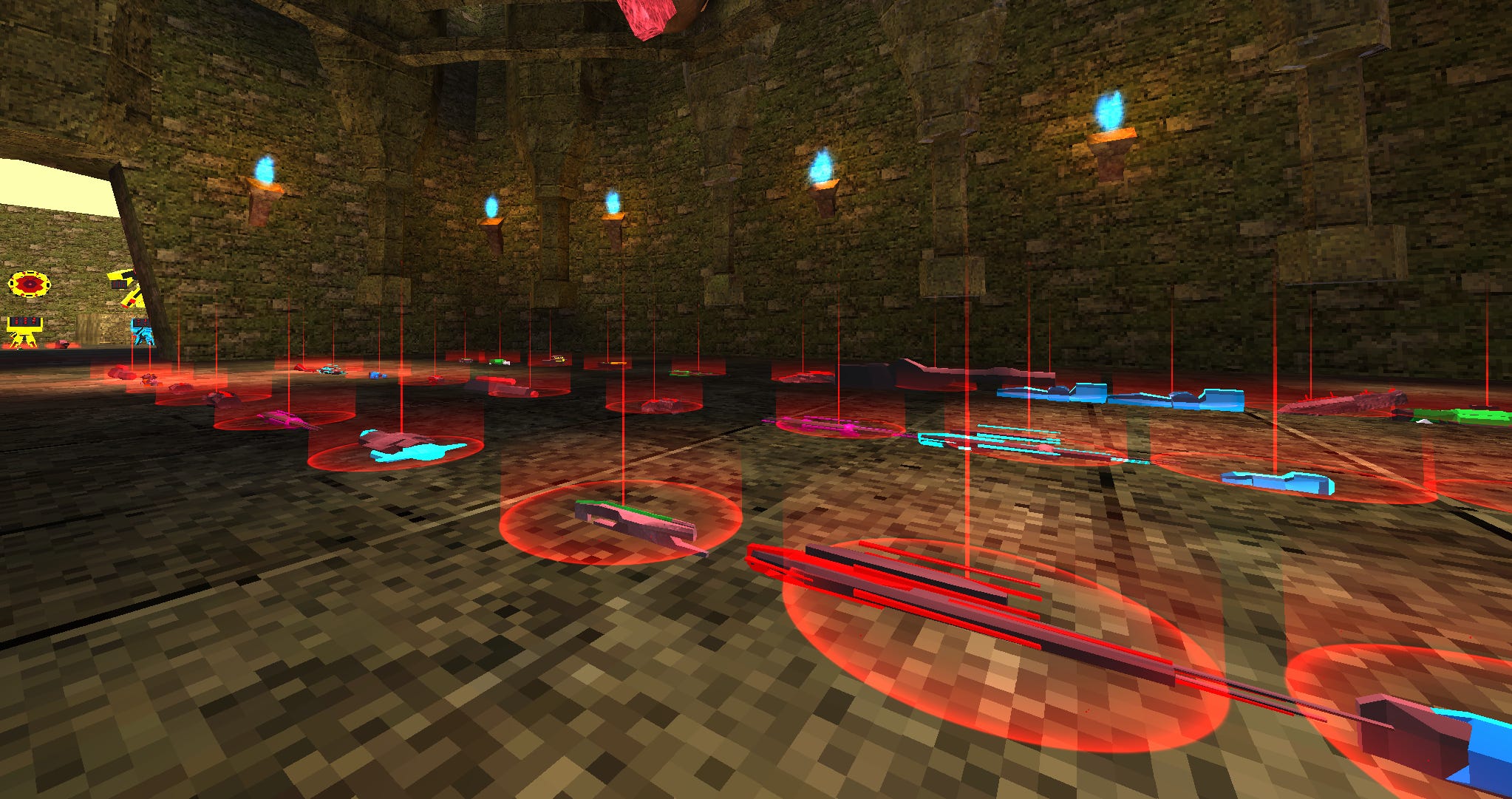
Through these systems, Godwalker was able to be built procedurally on a series of rules rather than on content. Weapons could be pushed and pulled to different extremes, enemies could have their behaviours mixed and matched, environments could be built and tested the same day, and new ideas could be prototyped in an afternoon. More articles on this section of Godwalker are to come, if you are interested in reading more see this article on Godwalker’s weapon design: Weapon Design & Forced Diversification
Audio
Godwalker features several dynamic audio systems, including dynamic music. Josh was inspired by several modern games and their ability to intertwine music with what was happening on the screen. He researched how games create dynamic audio, and how those dynamic elements can be applied to his own work. To read about the dynamic music systems in Godwalker and other projects, see: Dynamic Music in Games: Building Procedural Music
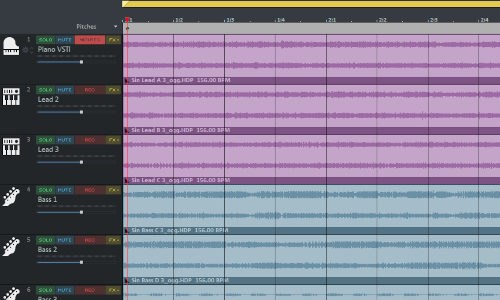
Production
One of the more under-served areas of game design is the process of managing the production of a game, especially when that game is produced by a single individiual. Throughout the process of developing Godwalker its project management needs were addressed and documented. Josh then developed a small short-hand process based on a paper published in 2006, detailing Agile management methodologies for solo developers, which he adapted to fit the needs of digital game project management.
This self-management method was named Wolf Introspective Game Production, and detailed in an article written by Josh here: Wolf Introspective Game Production. This method of production has been used by Josh since then to produce all of his works, and adopted by other solo developers to assist in the creation of their projects.
Showcasing
In 2023, Godwalker was asked to be featured at the GDC Expo in San Fransisco, CA, as part of the Games in New York booth. Josh was asked to give a talk, as well as present the game at the booth to discuss his process. Godwalker was then shown at several other showcases, including PlayNYC, GUMBO, Wonderville, RPI GameFest, and more.
Screenshots

